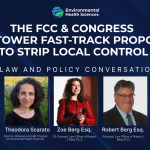[cmsmasters_row data_padding_bottom_mobile_v=”90″ data_padding_top_mobile_v=”70″ data_padding_bottom_mobile_h=”120″ data_padding_top_mobile_h=”100″ data_padding_bottom_tablet=”120″ data_padding_top_tablet=”100″ data_padding_bottom_laptop=”180″ data_padding_top_laptop=”160″ data_resp_vert_pad=”true” data_padding_bottom=”320″ data_padding_top=”300″ data_bg_parallax_ratio=”0.5″ data_bg_size=”cover” data_bg_attachment=”scroll” data_bg_repeat=”no-repeat” data_bg_position=”top center” data_bg_img=”15847|https://ehsciences.org/wp-content/uploads/2019/11/EHNFracking_Graber_Mulvaney_005-1024×681.jpg|large” data_color=”default” data_bot_style=”default” data_top_style=”default” data_width=”boxed” data_shortcode_id=”358tz28my”][cmsmasters_column data_width=”1/1″ data_shortcode_id=”tsg36hzfki” data_animation_delay=”0″ data_border_style=”default” data_bg_size=”cover” data_bg_attachment=”scroll” data_bg_repeat=”no-repeat” data_bg_position=”top center”][cmsmasters_heading shortcode_id=”48at8738nm” type=”h2″ font_size=”62″ line_height=”70″ font_weight=”default” font_style=”default” text_align=”center” color=”#ffffff” margin_top=”0″ margin_bottom=”20″ custom_check=”true” animation_delay=”0″]Change starts with science[/cmsmasters_heading][/cmsmasters_column][/cmsmasters_row][cmsmasters_row data_shortcode_id=”ygy0z54y2m” data_width=”fullwidth” data_padding_left=”0″ data_padding_right=”0″ data_columns_behavior=”true” data_top_style=”default” data_bot_style=”default” data_color=”default” data_padding_top=”0″ data_padding_bottom=”0″][cmsmasters_column data_width=”1/1″ data_animation_delay=”0″ data_border_style=”default” data_padding_mobile_v=”70px 8% 55px 9%” data_padding_laptop=”114px 8% 88px 9%” data_resp_padding=”true” data_padding=”195px 17% 160px 18%” data_shortcode_id=”fds70fuqos”][cmsmasters_heading shortcode_id=”l2iboihlip” type=”h2″ font_size=”46″ line_height=”52″ font_weight=”default” font_style=”default” text_align=”left” margin_top=”0″ margin_bottom=”20″ custom_check=”true” animation_delay=”0″]Change starts with science[/cmsmasters_heading][cmsmasters_text shortcode_id=”jzxhyb3cdq” animation_delay=”0″]
Because science doesn’t work itself into public policy without help
We bring a nonpartisan approach to improving science literacy and legitimacy
Good science doesn’t shape public policy by accident. It takes motivated citizenry, public literacy, and a helping hand.
We provide all three. One example:
The U.S. Food and Drug Administration for years has shown a “willful blindness” to new science warning that exposure to BPA leaves the public at risk of cancer, diabetes and other serious health conditions.
We worked behind the scenes with researchers to help develop experiments and to show the scientific consensus. One startling finding: Tests used by the federal government to assess BPA exposures dramatically undercount our actual levels.
We also bring nonpartisan reporting to the issue. Our team of investigative science journalists and editors reports on innovative findings and important policy gaps. Our 2019 series, “Exposed,” dug into the FDA’s blindness to BPA science. The political ramifications of that reporting is unfolding today.
Other work:
In 2019 the European Parliament, on a 447-14 vote, called on regulators to “swiftly take all necessary action” to protect human health and the environment against the dangers posed by endocrine-disrupting compounds. EHS Chief Scientist Pete Myers and a host of scientists and NGOs helped develop the language in the resolution.
EHS founder and chief scientist Pete Myers has spoken at dozens of scientific conferences around the world, including the 2019 Plastic Health Summit in Amsterdam.
We’re working hard today for a healthier, safer tomorrow.
[/cmsmasters_text][/cmsmasters_column][/cmsmasters_row]




